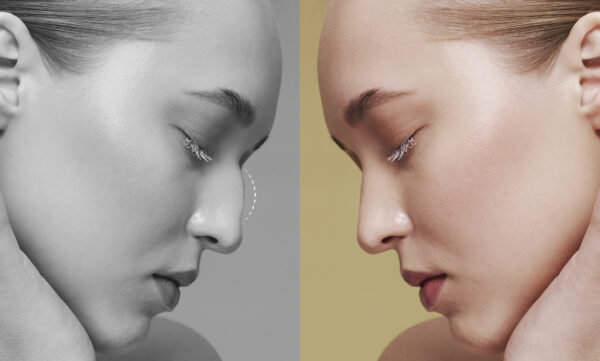
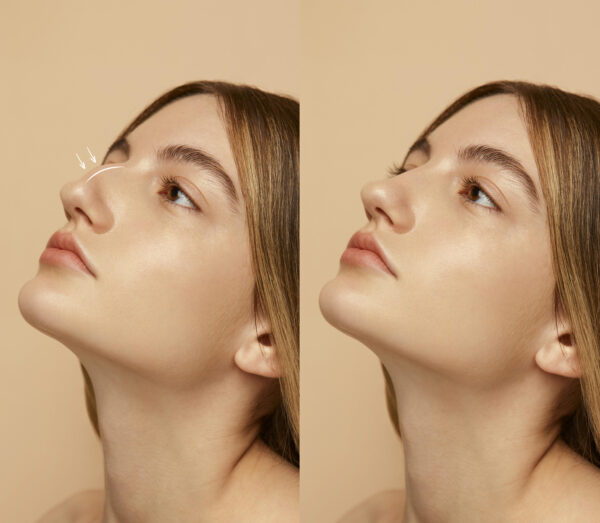

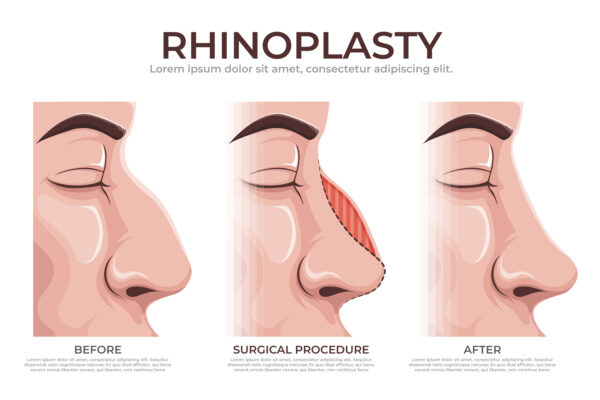
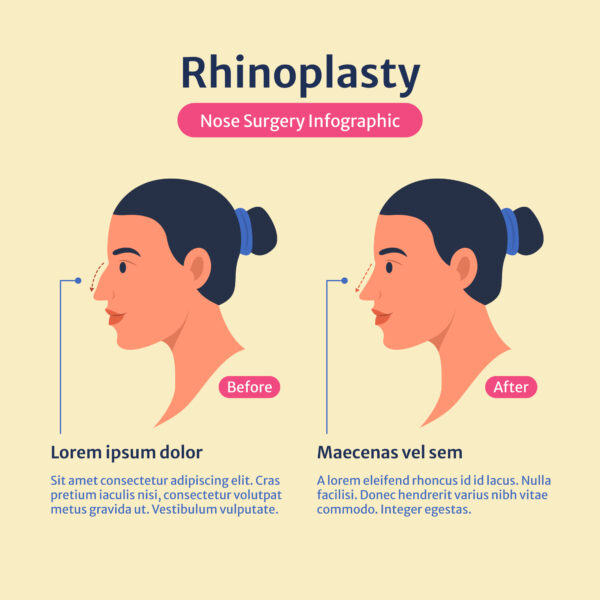
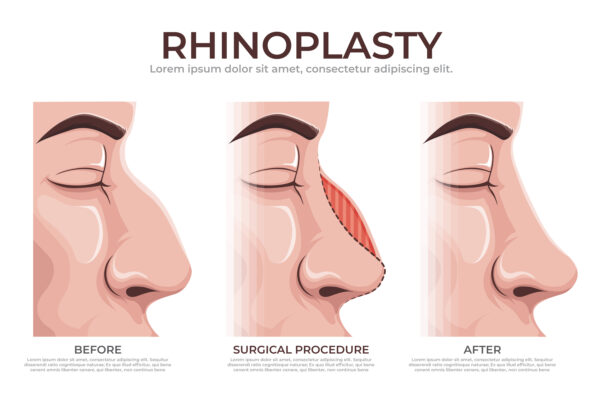
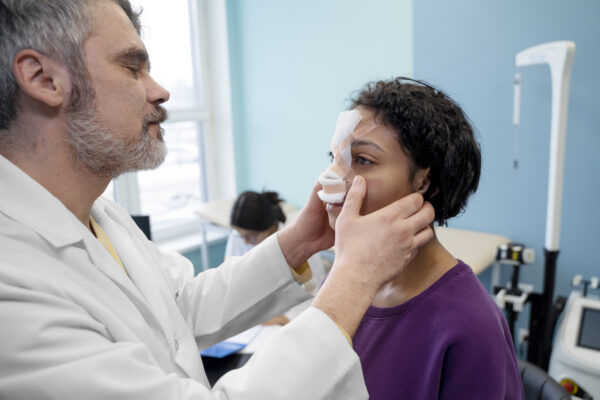
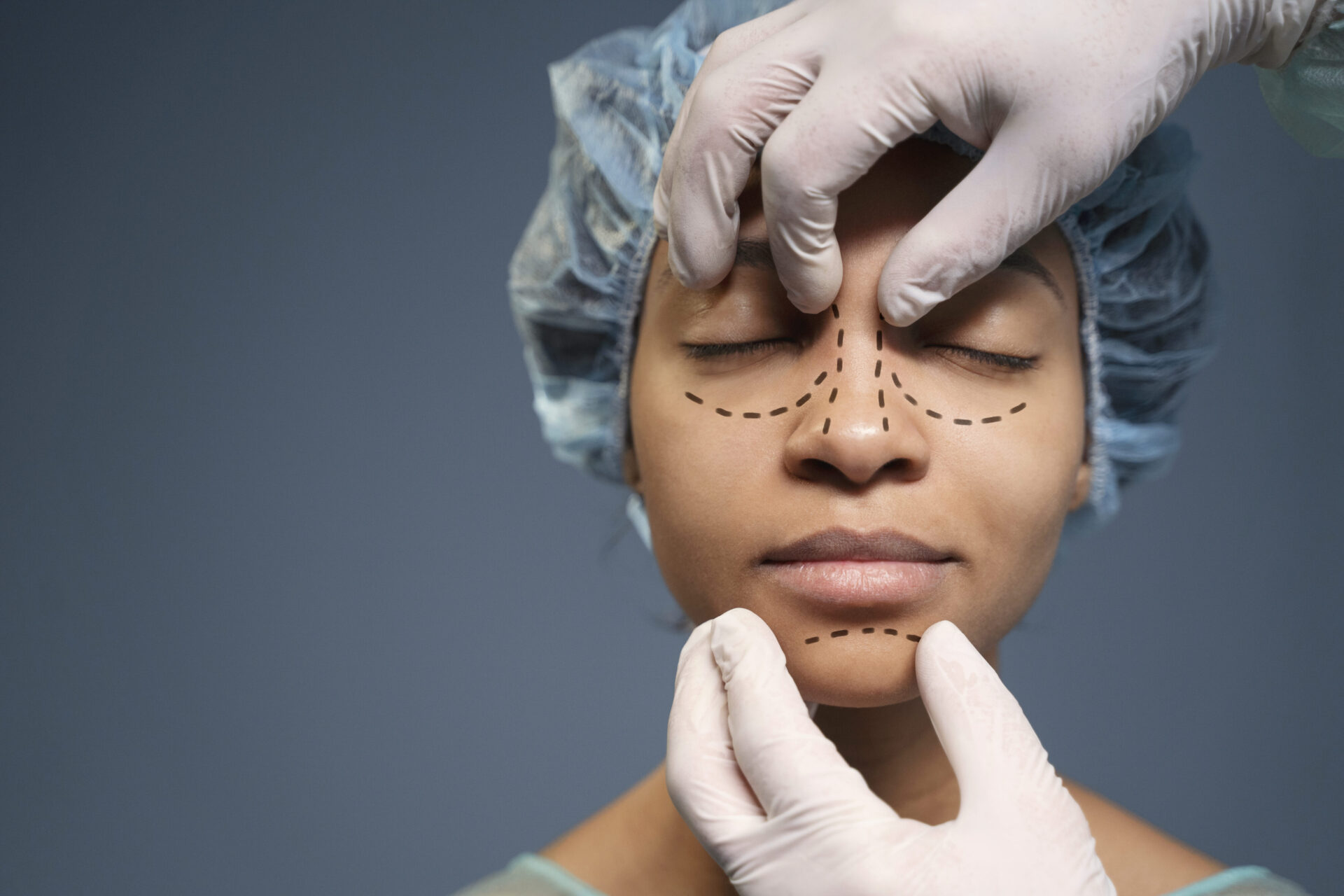
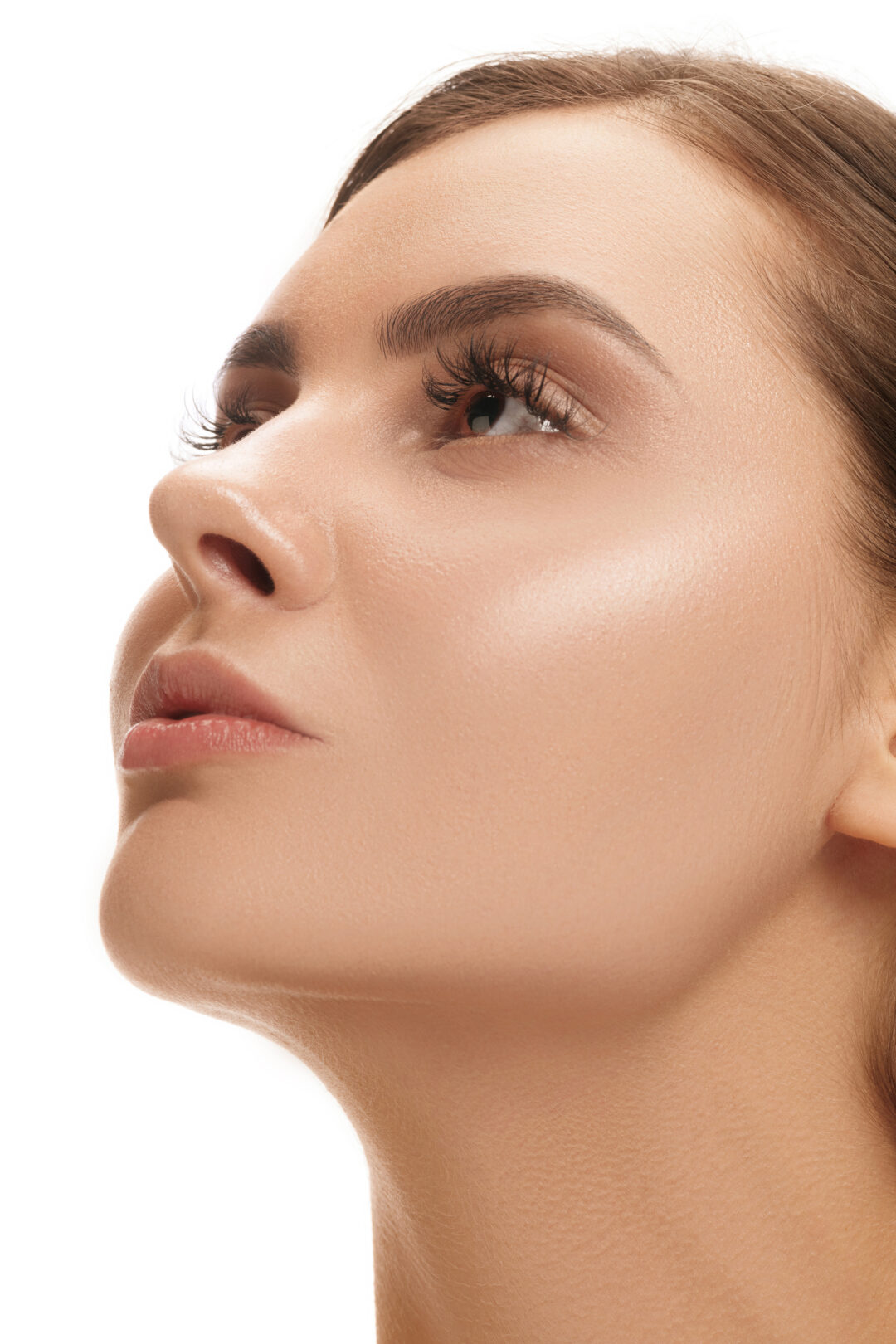
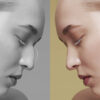


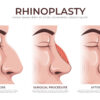
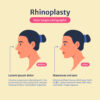
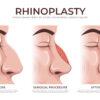
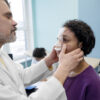
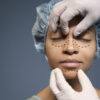
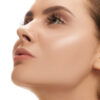

Free
Embark on a transformative journey with our exceptional range of medical treatments. As a leading medical tour operator, we offer a comprehensive selection of world-class treatments and procedures to address your unique healthcare needs. From advanced surgeries to cutting-edge therapies, our team of experienced professionals is dedicated to providing top-notch care and ensuring your comfort and satisfaction. Discover a new level of healthcare excellence with our tailored treatment options. Book now to start your journey towards a healthier and happier you.
Open rhinoplasty is a surgical technique used to modify the shape and structure of the nose. It involves making an incision across the columella, the narrow strip of tissue that separates the nostrils, to gain access to the underlying nasal structures. The procedure provides improved visualization for the surgeon, allowing for more precise modifications and corrections.
Here is a general overview of the open rhinoplasty procedure:
Anesthesia: Before the procedure, anesthesia is administered to ensure your comfort. The options include intravenous sedation or general anesthesia, and your surgeon will recommend the best choice for you.
Incision: In open rhinoplasty, a small incision is made across the columella, which is the external portion of the nose between the nostrils. This incision allows the surgeon to lift the skin and gain direct access to the nasal structures.
Exposure and Reshaping: With the skin lifted, the surgeon can visualize and modify the underlying nasal bones, cartilage, and soft tissues. The surgeon may use various techniques, such as removing or reshaping cartilage, repositioning bones, or adding grafts, to achieve the desired changes in the nose’s shape and structure.
Closure: After the necessary modifications are made, the skin is repositioned and sutured closed. The incision is typically well-hidden and heals with minimal scarring.
Open rhinoplasty is often recommended for complex nasal deformities, revision rhinoplasty, or cases where precise modifications to the nasal tip are required. It allows for a more comprehensive view of the nasal structures, facilitating intricate adjustments.
Open rhinoplasty is suitable for individuals who require extensive modifications to their nose or have complex nasal deformities. It is commonly recommended for the following cases:
Revision Rhinoplasty: Open rhinoplasty is often preferred for revision cases where previous nasal surgeries have been performed. The open approach allows for better visualization and access to correct any previous surgical complications or unsatisfactory results.
Nasal Tumors: Individuals with nasal tumors may benefit from open rhinoplasty as it provides better access to remove the tumor and reconstruct the nose.
Congenital Disabilities: Open rhinoplasty may be suitable for individuals with congenital disabilities such as cleft lip or dermoid cysts, where more extensive modifications and corrections are required.
Nasal Tip Modifications: If the nasal tip requires significant reshaping or modifications, open rhinoplasty may be recommended. The direct access provided by the open approach allows for more precise adjustments to the nasal tip cartilage.
Complex Surgeries: Open rhinoplasty is generally preferred for complex nasal surgeries that involve multiple areas of the nose, such as the septum, dorsum, nostrils, or removal of lumps or bumps.
Open rhinoplasty may not be suitable for everyone, and there are certain situations where an alternative approach may be recommended. Here are some scenarios where open rhinoplasty may not be suitable:
Minor Nasal Modifications: If you only require minor modifications to the nasal tip or other areas of the nose, a closed rhinoplasty approach may be more appropriate. Closed rhinoplasty involves incisions made inside the nostrils, avoiding any external incisions.
Thin or Delicate Skin: Open rhinoplasty involves making an external incision, which can result in more visible scarring. If you have thin or delicate skin, it may be more prone to noticeable scarring, and a closed rhinoplasty approach may be recommended to minimize this risk.
Limited Nasal Concerns: If your concerns are primarily limited to a specific area of the nose, such as the nasal bridge or nasal tip, and do not require extensive modifications to the underlying structures, a more focused approach like tip rhinoplasty or bridge augmentation may be appropriate.
Unfavorable Anatomy: In some cases, the anatomy of the nose may not be suitable for open rhinoplasty. This could include individuals with very thick or sebaceous skin, inadequate blood supply, or previous trauma that has compromised the blood flow to the nose.
Medical Conditions: Certain medical conditions or factors, such as uncontrolled diabetes, bleeding disorders, or compromised immune system, may increase the risks associated with open rhinoplasty. In such cases, your surgeon may recommend alternative options or additional precautions.
Open rhinoplasty offers several advantages compared to other techniques. Here are some of the advantages of open rhinoplasty:
Improved Visualization: One of the main advantages of open rhinoplasty is the enhanced visualization it provides to the surgeon. The open approach allows for direct visualization of the nasal structures, including the cartilage, bones, and soft tissues. This improved visibility enables the surgeon to make more precise modifications and achieve optimal results 1.
Complex Modifications: Open rhinoplasty is particularly beneficial for cases that require extensive modifications or corrections. It allows the surgeon to have better access to the nasal structures, making it suitable for complex surgeries, revision rhinoplasty, or cases involving significant reshaping of the nose 2.
Cartilage Grafting: Open rhinoplasty provides easier access to the nasal cartilage, making it advantageous for procedures that involve cartilage grafting. The surgeon can harvest cartilage from various sources, such as the septum or ear, and use it to reshape or reconstruct the nose 3.
Precise Tip Modifications: The open approach allows for more precise modifications to the nasal tip. It provides a clear view of the nasal tip cartilage, enabling the surgeon to refine its shape, projection, and symmetry with greater accuracy 1.
Better Assessment of Nasal Asymmetry: Open rhinoplasty allows the surgeon to thoroughly examine and address nasal asymmetry. The direct visualization provided by the open approach helps identify and correct any structural imbalances or deviations that contribute to asymmetry 4.
Suitable for Challenging Cases: Open rhinoplasty is often preferred for cases with challenging nasal anatomy, such as thick or sebaceous skin, inadequate blood supply, or previous trauma. The open approach provides better access and control in such situations.
Open rhinoplasty, like any surgical procedure, carries potential risks and complications. Here are some of the complications that can occur with open rhinoplasty:
Scarring: Open rhinoplasty involves an external incision on the columella, which can result in visible scarring. However, with proper surgical techniques and wound care, the scar can often heal well and become less noticeable over time.
Bleeding: Bleeding is a common risk associated with any surgical procedure, including open rhinoplasty. While bleeding during the surgery is managed by the surgical team, postoperative bleeding can occur and may require medical attention.
Infection: Infection is a potential complication of any surgical procedure. Although rare, it can occur after open rhinoplasty. Proper sterile techniques during surgery and postoperative care can help minimize the risk of infection.
Nasal Obstruction: In some cases, open rhinoplasty can lead to nasal obstruction or difficulty breathing through the nose. This can occur due to changes in the nasal structures or excessive scar tissue formation. Nasal obstruction may require additional treatment or revision surgery to address the issue.
Nasal Asymmetry: Despite the surgeon’s best efforts, there is a risk of postoperative nasal asymmetry. This can occur due to factors such as healing patterns, tissue response, or inadequate surgical techniques. Revision surgery may be necessary to correct any noticeable asymmetry.
Altered Sensation: Temporary or permanent changes in sensation, such as numbness or altered feeling in the nasal area, can occur after open rhinoplasty. These changes are usually temporary but can persist in rare cases.
Unsatisfactory Aesthetic Results: While open rhinoplasty aims to achieve desired aesthetic outcomes, there is a possibility of unsatisfactory results. Factors such as individual healing, tissue response, or unrealistic expectations can contribute to suboptimal aesthetic outcomes.
Preoperative care is an essential part of preparing for open rhinoplasty. While the specific instructions may vary depending on the surgeon and individual case, here are some general preoperative care guidelines:
Medication: Follow your surgeon’s instructions regarding medication use before surgery. Avoid medications that can increase the risk of bleeding, such as aspirin, ibuprofen, and other non-steroidal anti-inflammatory drugs (NSAIDs). It is important to inform your surgeon about any medications, supplements, or herbal remedies you are currently taking.
Smoking: Refrain from smoking for at least two weeks before and after surgery. Smoking can delay healing and increase the risk of complications, including poor wound healing and scarring.
Medical Evaluation: Your surgeon may require you to undergo a preoperative medical evaluation to ensure that you are in good health for the procedure. This evaluation may include blood tests, imaging studies, and consultations with other specialists if necessary.
Avoiding Illness: If you develop any signs of illness, such as a cold, flu, or fever, notify your surgeon. Surgery should be postponed until you have fully recovered to minimize the risk of complications.
Preoperative Instructions: Follow any specific preoperative instructions provided by your surgeon. These may include guidelines on eating and drinking before surgery, showering with antibacterial soap, and avoiding certain skincare products or makeup on the day of surgery.
Arrangements for Recovery: Make necessary arrangements for your recovery period. Arrange for someone to drive you home after the surgery and have someone available to assist you during the initial days of recovery if needed.
Postoperative care is crucial for a successful recovery after open rhinoplasty. While specific instructions may vary depending on the surgeon and individual case, here are some general postoperative care guidelines:
Follow Surgeon’s Instructions: It is essential to carefully follow the postoperative instructions provided by your surgeon. These instructions may include wound care, medication usage, and activity restrictions. Adhering to these guidelines will help promote proper healing and minimize the risk of complications.
Nasal Care: Keep the splint and dressings dry as instructed by your surgeon. Avoid blowing your nose for at least two weeks after surgery. If you need to sneeze, do so with your mouth open to minimize pressure on the nose. Your surgeon may provide specific instructions for nasal irrigation or saline sprays to keep the nasal passages clean.
Pain Management: Take prescribed pain medications as directed by your surgeon to manage any discomfort or pain. Over-the-counter pain relievers should be avoided unless approved by your surgeon.
Swelling and Bruising: Swelling and bruising are common after open rhinoplasty. Apply cold compresses or ice packs to the nasal area as instructed by your surgeon to help reduce swelling and alleviate discomfort. Keep your head elevated while resting or sleeping to further minimize swelling.
Rest and Recovery: Allow yourself ample time to rest and recover after surgery. Avoid strenuous activities, heavy lifting, and exercise for the duration specified by your surgeon. Engage in light activities, such as walking, as recommended to promote circulation and aid in healing.
Diet and Hydration: Maintain a healthy diet and stay hydrated to support the healing process. Follow any dietary restrictions provided by your surgeon, such as avoiding certain foods or beverages that may interfere with healing.
Avoiding Sun Exposure: Protect your nose from direct sun exposure for several months following surgery. Apply sunscreen with a high SPF and wear a wide-brimmed hat when outdoors to prevent sunburn and minimize the risk of hyperpigmentation.
Follow-up Appointments: Attend all scheduled follow-up appointments with your surgeon. These appointments allow your surgeon to monitor your healing progress, remove any sutures or dressings, and address any concerns or questions you may have.
Only logged in customers who have purchased this product may leave a review.
Liquid rhinoplasty, also known as a non-surgical nose job or non-surgical rhinoplasty, is a procedure that involves using injectable fillers to enhance the appearance of the nose without the need for surgery. While it is important to note that the information provided is based on the search results and should not be considered as medical advice, here is a general overview of the procedure:
Procedure: During a liquid rhinoplasty, a qualified plastic surgeon or specialist injects fillers, typically hyaluronic acid (HA) fillers, into specific areas of the nose to address concerns such as a dorsal hump (small bump), a drooping nasal tip, or asymmetry. The fillers are strategically placed to improve the contours and reshape the nose.
Duration: The procedure typically takes around 15 minutes to complete. However, if a numbing agent is applied before the injections, it may take an additional 10 to 15 minutes for the numbing to take effect.
Safety: Liquid rhinoplasty, when performed by a highly specialized and experienced specialist, is considered safe. Both medical-grade silicone and temporary fillers used in the procedure are FDA-approved. However, it is crucial to choose a qualified and skilled practitioner to minimize the risks and ensure optimal results.
Results: The results of liquid rhinoplasty are immediate and visible. The fillers help to smooth out bumps, balance asymmetry, and reshape the nose. It is important to note that the results of liquid rhinoplasty are temporary, as the fillers gradually break down over time. Maintenance treatments every six to 12 months may be necessary to maintain the desired results.
Recovery: One of the advantages of liquid rhinoplasty is that it typically involves minimal recovery time. Some patients may experience minor pain, redness, swelling, or bruising at the injection sites. These side effects are usually temporary and subside within a few days.
Liquid rhinoplasty, or non-surgical rhinoplasty, is generally suitable for individuals who have minor cosmetic concerns and are seeking a non-surgical alternative to traditional surgical rhinoplasty. Here are some factors that may make someone a good candidate for liquid rhinoplasty:
Minor Cosmetic Concerns: Liquid rhinoplasty is ideal for individuals who have minor cosmetic deformities of the nose, such as small nasal bumps or slightly droopy nasal tips. It can help address these concerns and improve the overall appearance of the nose.
Desire for Non-Surgical Approach: Some individuals may prefer a non-surgical approach due to factors such as cost, downtime, fear of surgery, or a desire for temporary results. Liquid rhinoplasty offers a non-invasive alternative to surgical rhinoplasty.
Previous Rhinoplasty with Minor Irregularities: Liquid rhinoplasty can be a great option for individuals who have previously undergone surgical rhinoplasty and have minor irregularities or asymmetries that need to be corrected.
Instant Results: Liquid rhinoplasty provides immediate results, allowing individuals to see the changes in their nose shape right after the procedure. This can be appealing for those who want instant gratification.
Temporary Solution: Liquid rhinoplasty offers a temporary solution for individuals who want to make changes to their nose shape without committing to permanent surgical alterations. The results typically last for several months before the fillers gradually break down.
Liquid rhinoplasty, or non-surgical rhinoplasty, may not be suitable for everyone. Here are some factors that may make someone not suitable for liquid rhinoplasty:
Significant Structural Issues: Liquid rhinoplasty is not recommended for individuals with significant structural or functional issues with their nose. This includes conditions such as a deviated septum, major nasal deformities, or breathing difficulties. In such cases, surgical rhinoplasty may be a more appropriate option to address these concerns.
Desire for Permanent Results: Liquid rhinoplasty provides temporary results as the fillers used in the procedure gradually break down. If someone is seeking permanent changes to their nose shape, surgical rhinoplasty may be a better option.
Extensive Changes: Liquid rhinoplasty is best suited for individuals with minor cosmetic concerns. It is not ideal for those who desire extensive changes to the size, shape, or overall appearance of their nose. Surgical rhinoplasty offers more flexibility in making significant alterations.
Pregnancy or Breastfeeding: It is generally recommended to avoid cosmetic procedures, including liquid rhinoplasty, during pregnancy or while breastfeeding. The safety of injectable fillers during these periods has not been extensively studied.
Allergies or Sensitivities: Individuals with a known allergy or sensitivity to the ingredients in the fillers used for liquid rhinoplasty may not be suitable candidates for the procedure. It is important to disclose any allergies or sensitivities to your healthcare provider before undergoing the procedure.
Unrealistic Expectations: It is important to have realistic expectations for the outcome of liquid rhinoplasty. While it can address minor cosmetic concerns, it cannot achieve the same level of change as surgical rhinoplasty. It is crucial to have a thorough consultation with a qualified practitioner to ensure that your expectations align with the potential results of the procedure.
Liquid rhinoplasty, or non-surgical rhinoplasty, offers several advantages compared to traditional surgical rhinoplasty. Here are some of the benefits associated with liquid rhinoplasty:
Non-Surgical Procedure: Liquid rhinoplasty is a non-surgical alternative to traditional rhinoplasty. It involves the use of injectable fillers to reshape and enhance the nose without the need for incisions or anesthesia. This means there is no surgery involved, resulting in minimal recovery time and less discomfort compared to surgical rhinoplasty 1.
Immediate Results: One of the significant advantages of liquid rhinoplasty is that the results are immediate. As soon as the fillers are injected, you can see the changes in the shape and contours of your nose. This instant gratification can be appealing for individuals who want to see immediate improvements without waiting for the healing process associated with surgical rhinoplasty 2.
Minimal Downtime: Liquid rhinoplasty typically involves minimal downtime. Unlike surgical rhinoplasty, which may require several weeks of recovery, liquid rhinoplasty allows individuals to resume their daily activities almost immediately after the procedure. This makes it a convenient option for those with busy schedules or limited time for recovery 3.
Customizable and Reversible: Liquid rhinoplasty offers a high level of customization. The injectable fillers can be precisely placed to address specific concerns and achieve the desired results. Additionally, if someone is not satisfied with the outcome, the fillers used in liquid rhinoplasty can be dissolved or removed, making the procedure reversible 4.
Temporary Results: The results of liquid rhinoplasty are temporary. The fillers used gradually break down over time, typically lasting from several months to a year. This temporary nature allows individuals to assess the changes and decide if they want to pursue more permanent options in the future 2.
Lower Cost: Liquid rhinoplasty is generally more cost-effective compared to surgical rhinoplasty. The procedure itself is less expensive, and there are no additional costs associated with anesthesia, operating room fees, or overnight hospital stays. This makes it a more affordable option for individuals seeking nasal enhancements 5.
Liquid rhinoplasty, like any medical procedure, carries potential risks and complications. While the procedure is generally considered safe when performed by a qualified and experienced practitioner, it is important to be aware of the possible complications. Here are some of the complications associated with liquid rhinoplasty:
Vascular Complications: Serious vascular complications, although rare, have been reported in liquid rhinoplasty procedures. These complications can occur if the filler is injected into a blood vessel or compresses it, leading to a blockage of blood supply. In severe cases, this can result in skin necrosis (death of the skin) or even blindness if the blood supply to the eyes is affected 1.
Infection: While infection is rare, there is a small risk of infection at the injection sites. It is important to ensure that the procedure is performed in a sterile environment by a qualified practitioner to minimize the risk of infection.
Allergic Reactions: Some individuals may have allergic reactions to the fillers used in liquid rhinoplasty. It is important to discuss any known allergies or sensitivities with your healthcare provider before undergoing the procedure.
Asymmetry or Irregularities: In some cases, liquid rhinoplasty may result in asymmetry or irregularities in the nose shape. This can occur if the fillers are not evenly distributed or if there is an improper technique used during the injection.
Migration or Displacement: There is a possibility that the injected fillers may migrate or become displaced over time, leading to changes in the shape or appearance of the nose.
Temporary Results: The results of liquid rhinoplasty are temporary, as the fillers gradually break down over time. This means that maintenance treatments are necessary to maintain the desired results. It is important to consider the ongoing cost and commitment associated with these maintenance treatments.
Preoperative care for liquid rhinoplasty involves several important steps to ensure a safe and successful procedure. While the specific preoperative instructions may vary depending on the practitioner and individual case, here are some general considerations:
Consultation: Schedule a consultation with a qualified plastic surgeon or specialist who specializes in liquid rhinoplasty. During this consultation, you will discuss your goals, expectations, and any concerns you may have. The practitioner will evaluate your nose and determine if you are a suitable candidate for the procedure.
Medical Evaluation: Before undergoing any cosmetic procedure, a comprehensive medical evaluation is typically conducted. This evaluation may include a review of your medical history, physical examination, and possibly some laboratory tests. It is important to disclose any pre-existing medical conditions, allergies, or medications you are taking to your healthcare provider.
Discussion of Expectations: It is crucial to have a clear and realistic understanding of the potential outcomes of liquid rhinoplasty. Discuss your expectations with your practitioner to ensure that they align with what can be achieved through the procedure. They will be able to provide you with a realistic assessment of what can be accomplished.
Preparation Instructions: Your healthcare provider will provide you with specific preoperative instructions to follow before the procedure. These instructions may include guidelines on medications to avoid, such as blood thinners, herbal supplements, and non-steroidal anti-inflammatory drugs (NSAIDs), as they can increase the risk of bleeding. You may also be advised to refrain from smoking and alcohol consumption before the procedure.
Arrangements for Transportation: Since liquid rhinoplasty is typically performed on an outpatient basis, you may need to arrange for transportation to and from the clinic or surgical facility. This is because the effects of any sedation or anesthesia used during the procedure may impair your ability to drive safely.
Skin Preparation: Your healthcare provider may provide instructions on how to prepare your skin before the procedure. This may involve cleansing the treatment area and avoiding the use of certain skincare products or makeup on the day of the procedure.
Questions and Concerns: It is important to address any questions or concerns you may have before the procedure. Take the opportunity to discuss the potential risks, complications, and expected recovery process with your healthcare provider.
Postoperative care for liquid rhinoplasty is essential to ensure proper healing and optimal results. While specific instructions may vary depending on the practitioner and individual case, here are some general postoperative care guidelines:
Follow Instructions: It is crucial to carefully follow the postoperative instructions provided by your healthcare provider. These instructions may include guidelines on wound care, medication usage, and activity restrictions. Make sure to ask any questions you may have and seek clarification if needed.
Manage Discomfort: Some discomfort, swelling, and bruising are normal after liquid rhinoplasty. Your healthcare provider may recommend over-the-counter pain relievers or prescribe medication to manage any discomfort. Applying cold compresses to the treated area can help reduce swelling and bruising.
Protect the Treated Area: Avoid touching or applying pressure to the treated area to prevent displacement of the fillers. It is also important to protect your nose from any trauma or injury during the healing process.
Avoid Strenuous Activities: Engage in light activities and avoid strenuous exercises or activities that may increase blood flow to the face. Your healthcare provider will provide specific guidelines on when you can resume normal activities and exercise routines.
Maintain Proper Hygiene: Follow proper hygiene practices, including gentle cleansing of the treated area as instructed by your healthcare provider. Avoid using harsh skincare products or applying makeup to the treated area until advised by your healthcare provider.
Attend Follow-up Appointments: It is important to attend all scheduled follow-up appointments with your healthcare provider. These appointments allow them to monitor your healing progress, address any concerns, and make any necessary adjustments.
Be Patient: It takes time for the swelling to subside and for the final results of liquid rhinoplasty to become apparent. Be patient and allow your body to heal naturally. It may take several weeks or even months for the full results to be visible.
There are no reviews yet.
Only logged in customers who have purchased this product may leave a review.
Choosing the right hospital and physician are important factors to consider that significantly influence a patient’s treatment. The preferred choice for many patients is choosing private care.
Choosing the right hospital and physician are important factors to consider that significantly influence a patient’s treatment.
Reviews
There are no reviews yet.